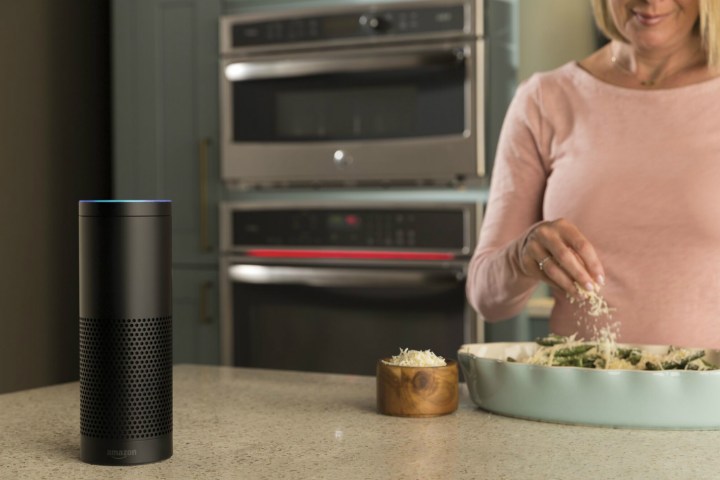
This year, at CES 2017, companies already have their door locks or cameras on the market — and if they don’t, they’re just partnering with other companies who already make those things.
It’s a year of integrations at CES 2017. Airmega, a smart air purifier that debuted last year, announced its integration with Amazon’s Alexa. Users can now turn on or off the device with their voice, or ask their Echo or Dot for an update on the air quality. Lutron’s big announcement wasn’t a new dimmer or shades but its integration with SmartThings and expanded capabilities with Nest via the Alphabet-owned company’s camera. Garage-door-opener maker Chamberlain used CES to tell customers it will make products that work with Apple’s HomeKit starting in July of this year.
Connected appliances have been a part of CES for a while, and while Samsung made a show its latest Family Hub 2.0 smart fridge, manufacturers such as GE and Whirlpool made a bigger deal of their integrations. GE is pairing with the Drop Connected Kitchen Scale, something Bosch announced it was doing last year. Drop leads users through recipes step by step, and it will be able to communicate with smart GE ovens and tell them to preheat to the proper temperature at the appropriate time. Whirlpool announced it’s putting Wi-Fi in a range of appliances across several price points, making connected kitchens more accessible. Voice activation, via Amazon’s Alexa, will be standard.
GE also announced a partnership with Nest. The Alphabet-owned company’s Protect smoke detector can turn off connected ovens if it detects you’ve burned the roast or notify you the appliance was left on after everyone left the house. Separately, each integration may not seem like a big deal, but improved convenience and security starts to make the whole connected kitchen look more appealing.
While homeowners may not put Wi-Fi capability on their must-have list for a new fridge or washer right now, that may change in the future. And the benefit of getting it now — even if the features aren’t there yet — is that manufacturers can push helpful updates to improve the service. You might not need the ability to preheat your oven with voice commands, but if you woke up one day and found GE had announced that you could, it might be a welcome surprise. Gourmia did something similar by including smart technology in several of its devices. It will activate the features this year, letting you control its countertop appliances by app.
In order for the smart home to reach critical mass, separate devices need to get better at communicating. It’s something everyone has been saying for a while, but by putting these announcements front and center at CES, it shows that some companies realize that their products, no matter how cool, cannot exist in a bubble by themselves.
Every year, people predict it will be the watershed moment for the smart home. I don’t think 2017 is the turning point, but all of this interconnection will certainly move the smart home forward. The next step? Making sure all these connected devices are secure. There’s nothing appealing about a smart fridge that’s easily hacked.
Editors' Recommendations
- Home Depot’s Hubspace is a great way to start building your smart home
- Samsung Ballie is a rolling smart home hub with a built-in projector
- Segway expands its smart home footprint with robot lawn mowers at CES 2024
- Samsung goes all-in with AI, reveals several new smart home appliances at CES 2024
- Home Depot expands its Hubspace smart home lineup at CES 2024



